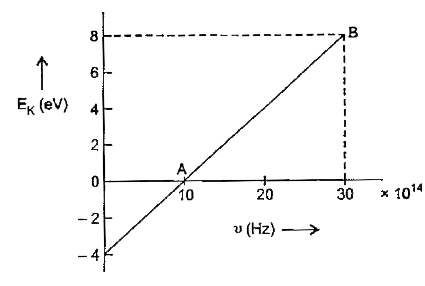Stopping potential for photo electrons
Does not depend on the frequency of the incident light
Does not depend upon the nature of the cathode material
Depends on both the frequency of the incident light and nature of the cathode material
Depends upon the intensity of the incident light
The correct Answer is:3
Step by step video & image solution for Stopping potential for photo electrons by Physics experts to help you in doubts & scoring excellent marks in Class 12 exams.
Updated on:21/07/2023Topper's Solved these Questions
- DUAL NATURE OF RADIATION AND MATTER BOOK - AAKASH INSTITUTE ENGLISHCHAPTER - DUAL NATURE OF RADIATION AND MATTER EXERCISE - ASSIGNMENT SECTION B.Objective (Only one answer)
6 Videos
- DUAL NATURE OF RADIATION AND MATTER BOOK - AAKASH INSTITUTE ENGLISHCHAPTER - DUAL NATURE OF RADIATION AND MATTER EXERCISE - ASSIGNMENT SECTION C. Objective (More than one answer)
4 Videos
- DUAL NATURE OF RADIATION AND MATTER BOOK - AAKASH INSTITUTE ENGLISHCHAPTER - DUAL NATURE OF RADIATION AND MATTER EXERCISE - Try Yourself
41 Videos
- CURRENT ELECTRICITYBOOK - AAKASH INSTITUTE ENGLISHCHAPTER - CURRENT ELECTRICITYEXERCISE - ASSIGNMENT SECTION-J
10 Videos
- ELECTRIC CHARGES AND FIELDS BOOK - AAKASH INSTITUTE ENGLISHCHAPTER - ELECTRIC CHARGES AND FIELDS EXERCISE - comprehension
3 Videos
Similar Questions
The stopping potential for photoelectrons ejected from a surface by 375 nm photons is 1.870 V. Calculate the stopping potential for 600 nm photons .
View SolutionThe stopping potential for photoelectrons from a metal surface is V1 when monochromatic light of frequency υ1 is incident on it. The stopping potential becomes V2 when monochromatic light of another frequency is incident on the same metal surface. If h be the Planck’s constant and e be the charge of an electron, then the frequency of light in the second case is:
View SolutionWork function of a metal is 3.0 eV. It is illuminated by a light of wavelength 3×10−7 m. Calculate the maximum energy of the electron.
View SolutionIn an experiment of photo-electric effect, the graph of maximum kinetic energy Ek of the emitted photoelectrons versus the frequency v of the incident light is a straight line AB as shown in figure below :

Stopping potential for the photoelectrons emitted by the light of frequency
v=30×1014Hz
View SolutionPhotoelectrons ar ejected from a surface when light of wavelenght λ1=550nm is incident on it. The stopping potential for such electrons is λS1=0.19V. Suppose that radiation of wavelength λ2=190nm is incident of the surface.
Q. Calculate the stopping potential VS2.
View SolutionThe electric field of light wave is given as →E=10−3cos(2πx5×10−7−2π×6×1014t)ˆxNC
This light falls on a metal plate of work function 2eV. The stopping potential of the photo-electrons is :
Given E (in eV) =12375λ(inÅ)
View SolutionThe electric field of light wave is given as →E=10−3cos(2πx5×10−7−2π×6×1014t)ˆxNC. This light falls on a metal plate of work function 2 eV. The stopping potential of the photo-electrons is:
Given, E (in eV) =12375λ(inÅ)
View SolutionAn electron in the hydrogen atom jumps from excited state n to the ground state. The wavelength so emitted illuminates a photo-sensitive material having work function 2.75eV. If the stopping potential of the photoelectron is 10V, the value of n is
View SolutionWhen a certain photosensistive surface is illuminated with monochromatic light of frequency v, the stopping potential for the photo current is V0/2. When the surface is illuminated by monochromatic light of frequency v/2, the stopping potential is V0. The threshold frequency gor photoelectric emission is :
View SolutionGraph of incident freuency with stopping potential in photoelectric effect is
View Solution
